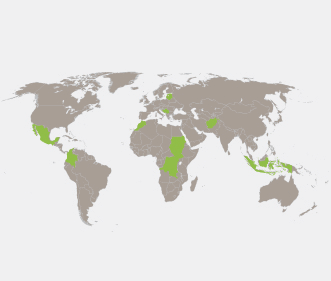By any available measurement, security in Haiti’s urban slums has deteriorated since the 2010 earthquake, reversing a period of gradual but consistent progress from 2006–2009. UN statistics, independent household surveys, NGO figures and field interviews all suggest that the handful of neighbourhoods where most of Haiti’s violence takes place have been experiencing a rising tide of crime and victimization in the last three years, in spite of law enforcement efforts by MINUSTAH and the Haitian National Police.
The UN’s armed violence reduction programming is hampered by Haiti’s condition as a non-traditional conflict-affected state. Haiti has no warring parties, no peace agreement and no former combatants to be reintegrated into society. Yet Port-au-Prince’s slum neighbourhoods are clearly suffering from a variety of overlapping conflict factors, including an absent state, a lack of service provision, dysfunctional families, urban violence associated with criminal gangs and political unrest stemming from widespread poverty, inequality and social exclusion. Underpinning and reinforcing all of the other factors is a persistent lack of economic opportunity for Haiti’s youth, resulting in few credible alternative livelihoods to those involved in gang activity.
The international community’s resources have been focused on providing support to the Haitian National Police, an institution tasked with combatting gangs and violence. The logic behind this policy is that a larger, more capable police force will be able to address impunity and create a deterrent to gang-related criminality by enforcing the law.
Leaders in these communities are skeptical that the law enforcement approach will be able to generate any tangible results on its own, pointing out that these interventions leave the underlying causes of conflict unchanged. Haiti’s urban violence is a multi-faceted problem, not limited to weak law enforcement. Gang-related violence has complex social, economic and political dimensions as well. As well, youth gangs in Haiti have a social dynamic, offering protection, social status and economic opportunities to marginalized youth. The economic conditions in these neighbourhoods offer little in the way of peace dividends or credible alternatives to crime — indeed, reinsertion programs aimed at former gang members proved controversial and were ultimately abandoned. Finally, political marginalization and a lack of representation in these communities fuel unrest and mass protests. Moreover, certain gang leaders were part of President Aristide’s patrimonial network and continue to see themselves as political agents.
There are a multitude of UN and NGO efforts aimed at addressing individual elements of this conflict dynamic — by providing conflict management skills, tangible rewards for peace, economic opportunity in the form of labour-intensive infrastructure projects and by empowering local political actors — but they tend to work on parallel tracks, operating in physical isolation from each other and focusing on different levers and different understandings of the nature of gang violence. One of the assumptions of the Vertical Integration and the United Nations Peacebuilding Architecture, a collaborative research project I am involved in, is that the interlocking nature of these conflict dynamics makes them resistant to unidimensional responses.
As a possible avenue for future research, the Vertical Integration and UN Peacebuilding Architecture project is examining the potential for community policing programs to better address the nexus between Haiti’s different conflict dimensions.
Geoff Burt is the Vice President of the Security Governance Group.
Tags: Gang Violence, Haiti, MINUSTAH





 Visit the Centre for
Visit the Centre for